Articles
“JUST WATCH MAH SMOKE” PART 7: DIVIN’ WITH DA SHARKS
 An aging Cocoa Kid, more damaged than anyone knew.
An aging Cocoa Kid, more damaged than anyone knew.
On December 9th 1943 the Boxing Writers Association of New York awarded those 4,019 boxers who answered Uncle Sam’s call during World War II the Edward J. Neil Memorial Plaque for outstanding service to the sport. One of those recipients was a thirty-year-old steward’s mate.
The following June, Cocoa Kid was handed his military discharge papers while a patient at a United States Naval Hospital and sent on his way. He filed a claim for disability benefits from the Veterans Administration and boarded a train east to live with his family on West 53rd Street in New York City.
After spending two months in the gym, Cocoa Kid, now a middleweight, stepped through the ropes of a Brooklyn ring. A thousand servicemen watched him knock Billy Campanelli down three times before the fight was stopped. From there he took a train down to New Orleans for a draw with Holman Williams and then went west to Hollywood where Jack Chase was waiting. “Some critics,” opined the Los Angeles Times, “think these two should deal off such a scientific spray that pictures ought to be made to serve as instructions to the younger generation on what the manly art of self-defense is all about.”
Cocoa Kid shocked them all by winning every round. No one filmed it.
Three weeks later, he met the third consecutive member of Murderers’ Row in two months. Aaron “Tiger” Wade nailed him in the first round and he dropped like a cheap suitcase for an eight count. He got up to finish the remaining rounds in a daze and lost the decision. In two weeks he was telling the San Francisco Examiner’s Eddie Muller that he’d be in better shape to fight Oakland Billy Smith. Muller believed him.
The betting odds favored Cocoa Kid over Smith by 2-1, but referee Frankie Brown had an ear on the avenue and he heard that Cocoa Kid was set to take a dive. The rumor was buzzing around the San Francisco Civic Auditorium before the main event. When the odds sank to even money and suddenly sprang up in favor of Smith at fight time, Muller saw the writing on the wall.
So didn’t the referee. He confronted Cocoa Kid in the dressing room. “He promised me then,” said Brown, “that he would do his best, that he was a clean fighter all his life and knew nothing of rumors being circulated that he was to lose.”
Brown watched him closely from the opening bell. He watched him roll with a “light left hook” to the body and go down anyway. Brown didn’t start the count; he told him to get up and warned him that he wouldn’t be paid if he threw the fight. In the second round, Cocoa Kid’s jab hissed out like it was supposed to and he won the round. Then came round three; Smith landed a right of no account to his forehead and he collapsed by the ropes. Brown angrily told him to get up. After he tumbled down again, Brown waved the fight off and declared it a “no-contest.” The crowd gave Brown an ovation, and booed Cocoa Kid out of the auditorium.
After the fiasco, Brown wrote a report where he recommended that Cocoa Kid’s purse be withheld and he be banned from competing in California for the rest of his career. Cocoa Kid feebly claimed that the first punch that knocked him down debilitated him. No one was buying it. At the official hearing on December 6th 1944 the disgraced fighter tried a new claim. He said his poor performance was because of familial concerns, including a sick mother and problems with his now ex-wife Maria, who was suing for custody of his children.
…It had been nearly a decade since Cocoa Kid stood up to a well-connected manager and reported a bribe in Connecticut. He was a fresh-faced newcomer then, bolder perhaps and more naive. We can’t see the personal or professional cost of that decision, but we can guess: It may have forced him to leave town and hide out in a harbor village. It may have seen his name blacklisted by the powers-that-be who decided who got world title shots and who got left out in the cold.
His clock was ticking and he knew it. By the spring of 1941, he had, according to the Washington Post, “lost some of his zip.” If the Navy medical officers were correct in diagnosing him with Dementia Pugilistica, he was losing more than that. By the end of 1942 insiders were calling him “the ancient Keed” and he wasn’t even thirty. By the time he fought Smith, he was thirty and his odometer read 213 fights in a career that began way back in 1928. That’s a lot of wear and tear on a man.
If he wanted a world title shot before his power surges turned to hot flashes and his mind turned to mush, he had to get it soon. He had to do something. So what happened? A manager or a representative of something grimmer may have approached him out of the shadows. “Take a dive,” he’d have heard, “and we’ll take care of you.” There may have been a flip-side –“double-cross us like you did Lou Viscusi back in New Haven and you won’t walk away from it.” What no one counted on was how awful Cocoa Kid would be at falling down. He was worse than Sonny Liston in Lewiston. Sure, he could carry an opponent –he almost certainly carried several white ones over the years, but taking a dive is different. It crosses the line into the kind of corruption you don’t come back from, the kind that causes irreparable harm to a career and reputation. Diving also requires practice and some degree of thespian talent. Cocoa Kid had neither.
What he had was a gun to his head. That would, at least, explain why he fell down after warnings that began in the dressing room and why he continued to fall down even after he was told that he wouldn’t be paid. What –or who– was he afraid of? The chairman of the California State Athletic Commission smelled sharks: “The Cocoa Kid had a high reputation,” he said, “and he is possibly the victim of the intimidation of others.”
If he was, he kept his mouth shut this time around.
The truth is often a liability in red light districts. Sometimes it’s in the trunk of a car stuffed in a sack. Rocky Graziano was as tough a middleweight as there ever was and he was approached to throw a fight on four different occasions. A prosecutor put him under oath and asked him to name names. He refused. Graziano knew the consequences. Cocoa Kid was asked about the rumors of a “gambler’s fix” and replied “I don’t know anything about it.” Then he was asked if he recognized the name of a prominent underworld figure operating in the area. “I’ve heard the name,” he said, “but I’ve never met him.” Cocoa Kid knew the consequences.
In the end, his $600 purse was forfeited and the commission unanimously voted to suspend him from fighting in California for the maximum time allowable.
THE SHIP SAILS
Archie Moore is considered by many to be among the best pound-for-pound fighters who ever lived. He was not only in his prime and ranked second in the light heavyweight division when Baltimore invited Cocoa Kid to face him, he was a debilitating puncher. No fighter in history scored more career knockouts.
Cocoa Kid’s decision to face him was either high-minded or desperate. At first it seemed high-minded. Long arms and legs enabled him to outmaneuver Moore for seven rounds. But Moore caught up with him in the eighth, landed a right hand smash on the tip of his chin, and that was that. Cocoa Kid lay still as death and was counted out. With that, Moore also counted him out of serious contention for all time.
The aging fighter’s journey soon decelerated into something of a farewell tour. He fought in nostalgic venues such as Holyoke and New Orleans, and even travelled to Puerto Rico for two bouts. Less ready but still willing to face top-ranked fighters, he’d crash enemy gyms to watch them train, and lose nearly as much as he won. When Cocoa Kid fought stable mate Bert Lytell for the third time, he couldn’t hold him off anymore. He went six rounds “on courage alone” until chief second Dan Florio refused to let him out of the corner for the seventh. Florio may have saved his life.
Once in a while, Cocoa Kid was still able to conjure up old tricks and surprise everyone. He fought a hungry prospect in Ray Barnes who, at eighteen, happened to be the same age that Cocoa Kid was when he defeated Louis Kaplan all those years ago. Barnes had never been stopped. He brimmed with the confidence of youth –and was knocked cold inside of six rounds. “The odds were 15 to 1 on Barnes,” Cocoa Kid said after the smoke cleared. He said it quietly –perhaps in that slurring whisper so sad and familiar.
It would be his last victory.
A circle was closing. What began with fifty cent sparring sessions in West Palm Beach was ending with sparring sessions in the camps of middleweight champion Tony Zale and Marcel Cerdan. Once again he found himself forced to work for fighters with brighter futures, only now his jets had cooled as much as his bank account.
He told the Chicago Daily Tribune that he “could use a good-sized purse,” and he almost got one.
Sugar Ray Robinson had signed a contract with a promoter in Houston, Texas to face Gene Burton. When Burton’s suspension in another state came to light, the promoter reached an agreement with Robinson to face a rusting Cocoa Kid on April 17th 1949. Robinson, who had complained that both Zale and Cerdan had turned down offers to fight him, never showed up. The Deputy Boxing Commissioner recommended that he face immediate suspension until he fulfilled the contract or reimbursed the promoter. “This runout,” he said, “is certainly no credit to Robinson.” Robinson agreed to reschedule the bout for May 24th; but didn’t show up for that either.
Cocoa Kid, now 35, was robbed of yet another opportunity to prove himself against a world champion. Three months later he was in New Jersey sparring with Robinson for chump change. He knocked him down with a perfectly timed right hand
–and then disappeared.
…..
CHECK BACK SOON FOR THE CONCLUSION OF THIS SERIES.
Photograph courtesy of Ric Kilmer and boxrec.com.
“4,019 Boxers in Uniform Share 1943 Neil Plaque” reported in San Francisco Examiner 12/9/43; Disability claim and mailing address after discharge found in military service records of Luis Humberto Harwick/Cocoa Kid, courtesy of National Personnel Records Center, Military Personnel Records, in St. Louis, MO; Campanelli fight reported in New York Times, 8/25/44; Cocoa Kid-Jack Chase bout reported in Los Angeles Times 10/20, 21/44; Eddie Muller’s reports in the San Francisco Examiner remain critical for any serious researcher of Murderers’ Row –see 11/24, 25, 26, 28 and 12/25/44 for details regarding the Oakland Billy Smith bout. See also UP report in Berkeley Daily Gazette 12/6/44 and Ed Emery’s UP report in Berkeley Daily Gazette 12/16/44 and Nevada State Journal 12/17/44; Graziano’s troubles are recounted in Jeffrey T. Sammon’s Beyond the Ring: The Role of Boxing in American Society, pp. 141, 142; Cocoa Kid “lost some of his zip” in Washington Post 4/20/41 and referred to as “the ancient Keed” in the Baltimore Sun 12/14,15/42; Archie Moore-Cocoa Kid bout reported in Baltimore Sun 9/17, 18/44; Florio’s “wise decision” during the Lytell bout reported in the Times-Picayune 5/19/47; Cocoa Kid’s statement after the Barnes fight in Chicago Daily Tribune 2/23/48; Sparring with Zale and Cerdan reported by AP in Lewiston Daily Sun 9/10/48; Robinson’s “run-out” reported by the UP in several newspapers including the Long Beach Press-Telegram. See also Sunday Morning Star 5/29/49.
Springs Toledo can be contacted at scalinatella@hotmail.com.
-

 Featured Articles3 weeks ago
Featured Articles3 weeks agoAvila Perspective, Chap. 330: Matchroom in New York plus the Latest on Canelo-Crawford
-
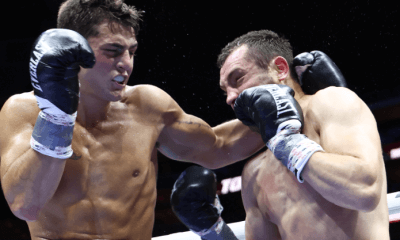
 Featured Articles2 weeks ago
Featured Articles2 weeks agoVito Mielnicki Jr Whitewashes Kamil Gardzielik Before the Home Folks in Newark
-
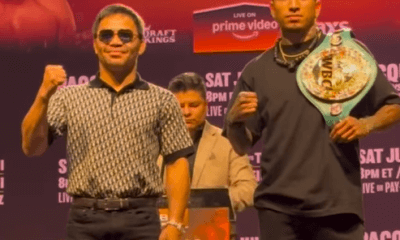
 Featured Articles4 weeks ago
Featured Articles4 weeks agoAvila Perspective, Chap 329: Pacquiao is Back, Fabio in England and More
-
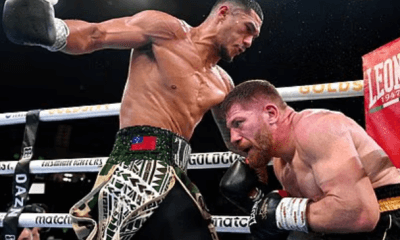
 Featured Articles4 weeks ago
Featured Articles4 weeks agoOpetaia and Nakatani Crush Overmatched Foes, Capping Off a Wild Boxing Weekend
-
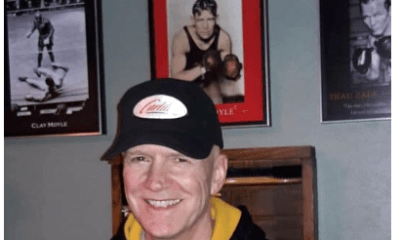
 Featured Articles3 weeks ago
Featured Articles3 weeks agoCatching Up with Clay Moyle Who Talks About His Massive Collection of Boxing Books
-

 Featured Articles4 weeks ago
Featured Articles4 weeks agoFabio Wardley Comes from Behind to KO Justis Huni
-
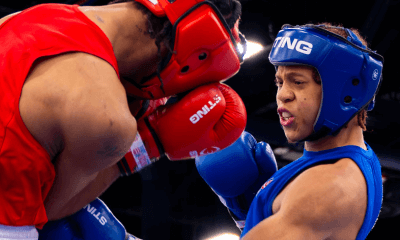
 Featured Articles1 week ago
Featured Articles1 week agoMore Medals for Hawaii’s Patricio Family at the USA Boxing Summer Festival
-
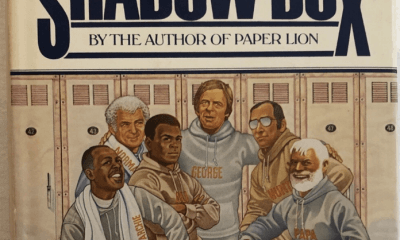
 Featured Articles4 weeks ago
Featured Articles4 weeks agoDelving into ‘Hoopla’ with Notes on Books by George Plimpton and Joyce Carol Oates
















